It's 5:30 a.m. and I'm climbing out of a van in the middle of a large field in central Turkey. It's still dark, but I can see the silhouettes of half-filled hot air balloons scattered about on their sides. We watch a man inject the closest one with air, and then warm that air with huge bursts of fire. The sky gets lighter, and the balloons inflate slowly, like giant, benevolent monsters coming out of a deep sleep.

Our pilot introduces himself. His name is Baris, but, he says, we can call him Boris. I wonder what it must be like to list "hot air balloon pilot" as your profession. You might as well say "unicorn rider" or "yellow brick road paver."
Taking a hot air balloon ride has been on my bucket list for longer than I care to admit, and I visit Turkey every year these days, so doing it in Cappadocia makes sense. Beyond that, it's still too early and too chilly to have any cohesive thoughts around what's about to happen.
Sixteen of us, plus Boris, climb into the balloon basket. There are about 50 other balloons around us. Boris pulls a lever and more fire spews upwards, and suddenly we are a foot off the ground, then 10, then a hundred. Then we are one of 50 enormous bubbles floating in the sky, which is getting lighter, and the fairy chimneys are all around us. And I am gobsmacked, speechless, awestruck beyond all English vocabulary.
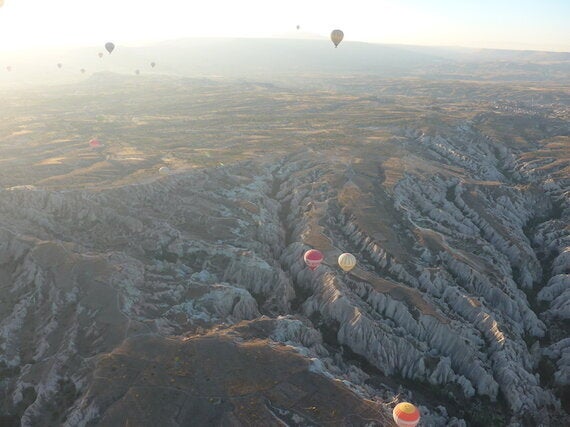
Our first hover is Love Valley, so named because the peaks are phallic.
"But this is a Muslim country," Boris points out. "So they are circumcised."
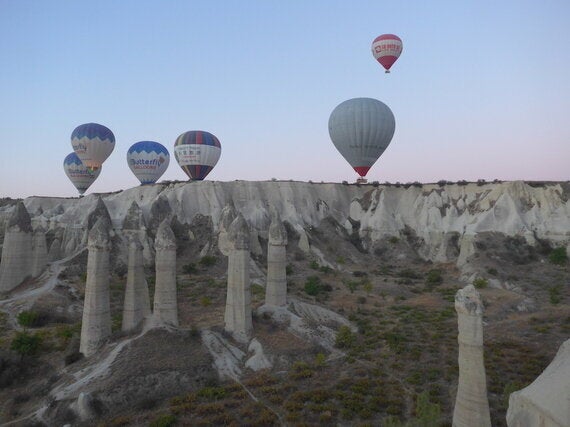
Then Red Valley, which is self-explanatory. There is Mount Erciyes, the highest mountain in Central Anatolia. There are fields of fig trees, apple trees and apricot trees. There are fairy chimneys of all widths and heights, the youngest of which is a million years old. Later, I will learn that, in 300 BC, one whole section of these otherworldly stone peaks were inhabited by hermits. Not religious hermits, just guys who wanted to live in solitude do good deeds for people. The farmers would feed them.
I mean, come on.

I take photo after photo. After a while, all I can do is stare and try not to cry. More fire bursts, and we float up, down and in circles, around more volcanoes and ancient tales. The sun finally comes out from behind a mountain. When we land, there is champagne and homemade cake. You'd think Cappadocia couldn't get any more enchanting than that, but you would be wrong.
I'm not usually one for guided tours, but after a few minutes with Ismail from Travel Atelier, I'm a convert.
There is no question he can't answer and no fact he doesn't know. For example, he explains that Uchisar Castle, which was used by the Romans, then the Byzantines, then the Selcuks and then the Ottomans, would, in times of attack, communicate with Ortahisar Castle -- just over two kilometres away -- from high-up windows by reflecting light with obsidian mirrors.
Who needs Lord of the Rings?
Ismail takes me to Kaymakli, one of Cappadocia's many underground cities. Its first inhabitants were hunter-gatherers, 10,000 years ago, who used these caves for protection against wild animals. Later, they became shelter during invasions. Their size and depth is mind-boggling: Kaymakli could hold over 20,000 inhabitants. But even more mind-boggling is to stand in the quiet of one of the rooms or churches, dozens of meters under the earth's surface, trying to imagine people living here, worshipping here, fighting here, dying here, so many ages ago that my human mind can't begin to grasp it.
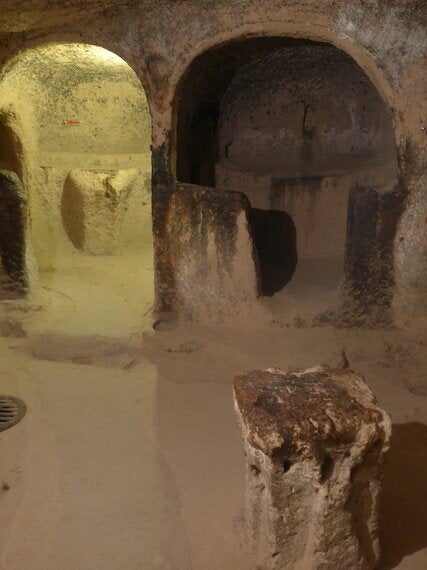
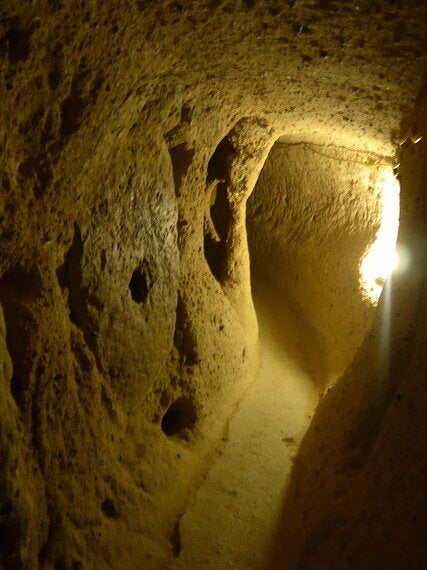
Ismail also knows the best place in Cappadocia for lunch.
Kadin Girişimciler Restaurant is owned and run by a women's cooperative, and many of the staff are single mothers. We order dolma manti -- Turkish ravioli -- and the blend of flavours is stunning. Homemade Ayran (yogurt drink), mouthwatering grape leaves and icli kofte (ground meat fried in bulger) round up the meal. It is without a doubt the most delicious food I have ever had in Turkey. And I've had a lot of food in Turkey.
The Goreme Open Air Museum is a cluster of rock-cut churches and rooms, painted with haunting frescoes dating as far back as the 10th century. At my request, Ismail explains the meaning behind each cave painting, down to the body postures and hand positions in the depictions of Christ and the saints. He does so from outside the rooms, however, as talking (and taking photos) is not permitted inside, which heightens the experience that much more.
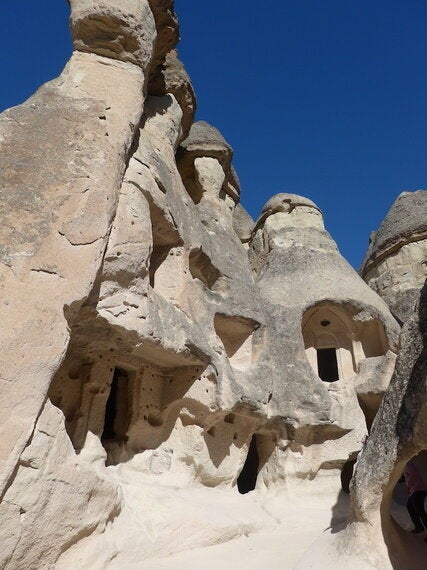
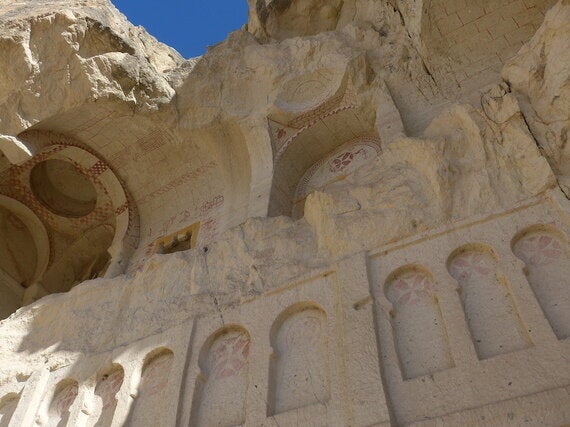
Despite its draw to travellers of all budgets and tastes, Cappadocia, remains very authentically Turkey, a trait most spots with that kind of pull would have lost long ago. Wander the streets of Ortahisar and you’ll find tiny (but excellent) kebob shops and roadside fishmongers. And yet, if it’s luxury you’re after, end the day as I did, reclining in a steaming bath in the new House Hotel, a complex of ancient caves and hold houses transformed into sumptuous suites, some painted with frescoes echoing Cappdocia's rich history.
Whether it's the hundreds of generations of spirits and gods, the dreamlike landscape, or the soul-revivingly fresh mountain air, there is something special about Cappadocia -- a feeling that stays with me long after I leave. There's a lot of world to see, but this is one place I plan to return to as often as I can.
Follow HuffPost Canada Blogs on Facebook
Also on HuffPost: